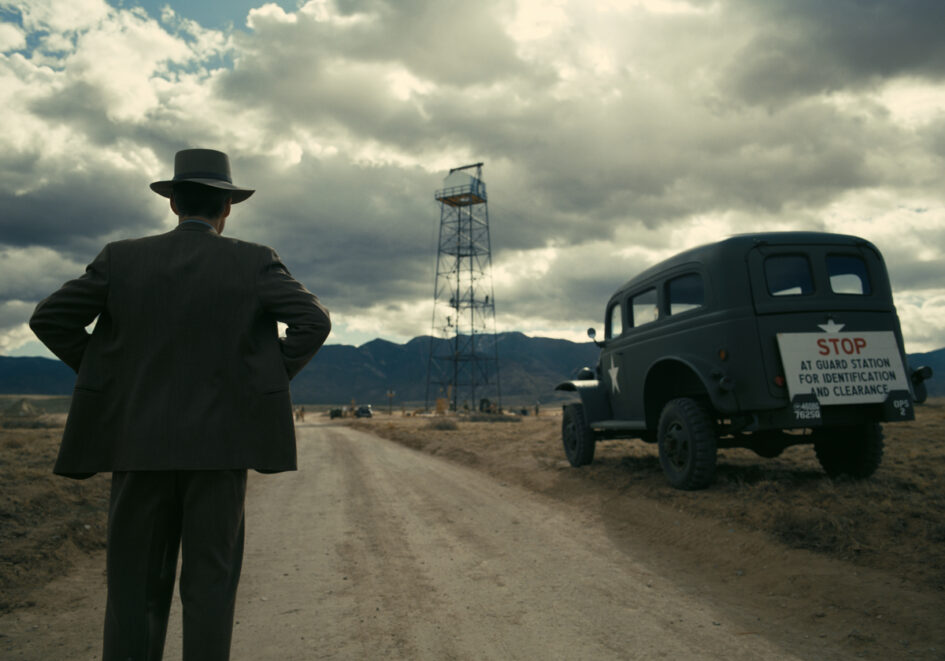Committing to watching a three-hour movie is never an easy task, especially when most people’s knowledge of Oppenheimer’s life is limited to his work on the atomic bomb. As I stepped into the theater, that was the extent of my understanding, and I harbored concerns about the ability to keep an audience who knows so little engaged for so long. I expected to leave the theater with an image of the Trinity Test stuck in my mind, but I instead found myself captivated by the intricate portrayal of the man behind it all. While the movie doesn’t shy from showing the awesome power of the atomic bomb, from the outset, I became more engaged with every aspect of Oppenheimer’s journey. It is a story that’s so fascinating it’s hard to believe it’s not fiction.
A story can only be as good as the person telling it, and Nolan ensured he would not be the limiting factor. Nolan used every aspect he could to portray Oppenheimer’s life in the most engaging way possible. I figured the use of 70mm IMAX film would undoubtedly look incredible, but Nolan manages to do so much more. From the opening scene, when you see the 70mm film fill the massive IMAX screen in front of you, it feels as though you are stepping back in time and living these events as they played out. The film uses different aspect ratios throughout the movie, which I usually can find jarring, but there was such a purpose behind each change Nolan implants and helps tell the story in ways I didn’t know were possible. This perfectly accompanied Hoyte van Hoytema’s masterful cinematography, which thrived with the choice not to use CGI. The limited use of major VFX through practical techniques was a masterstroke that lent “Oppenheimer” an unparalleled feeling of realism.
The realism of this film should not be discussed without mentioning the incredible cast that brought each character to life. I knew Cillian Murphy was going to do a great job, but his portrayal of Oppenheimer was so incredibly convincing that there were moments when I had to remind myself that I wasn’t watching actual footage of the real historical figure. One of Murphy’s many strengths as an actor lies in his ability to convey a wealth of emotions and depth through the subtlest gestures and expressions, and this film is full of it. It’s going to be hard watching him in any other role due to the way he fully embodied Oppenheimer. This film managed to accomplish something I didn’t know was possible, making me forget Robert Downey Jr. was Tony Stark. As the movie unfolded, Downey’s talent only showed through more, culminating in a stunning scene in the third act of the film. The entire cast deserves endless praise.
When the credits rolled, I was rendered speechless, and much of that can be credited to the incredible score composed by Ludwig Göransson. For such a young composer to deliver a score that is this incredible is simply amazing. The score was in your face at times and subtly moved the story along with others. Every musical element, from the tempo to instrument choice, felt so deliberate, enhancing the portrayal of characters and themes throughout the film.
As the ongoing internet feud between “Barbie” and “Oppenheimer” reaches its climax this weekend, it’s important to remember a cinematic achievement like “Oppenheimer” cannot be measured by box office success. Nolan’s film is a powerful and thought-provoking portrayal of a historically significant event and an influential figure. Its narrative depth, masterful direction, exceptional cast performances, and stunning visuals ensure that it will leave a lasting impression on audiences for years to come. Oppenheimer is a story that the world needed to hear, and Nolan told it in the most awe-inspiring way possible.



